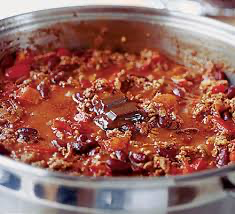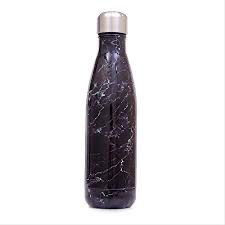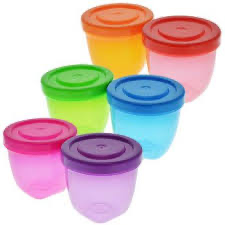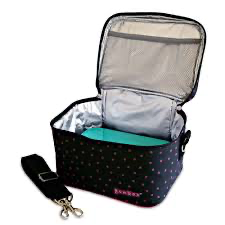Eating well on the road.
- Annie Mason
- Jan 12, 2023
- 6 min read
Updated: Jan 18, 2024
There is no doubt that one of the biggest challenges for us when travelling, is managing our diet. It must be very hard for travellers with special dietary needs- they would have to plan well ahead. As older travellers we are especially aware of our diet and it can be hard to eat well, especially on a budget. At home we eat well and spend time preparing food but when we travel we tend to eat what is readily available. For short trips, we just do the best we can, and know that we can sort it out when we get home. For longer trips however (it been over a year now) we have to work that bit harder to try and eat as well as we can. So, this is how we do it.
HOW WE EAT
When we travel, we have a mix of self- catering/picnics and eating out. The mix between the two depends on where and how we are travelling and how long we are away.
Short trip- Travelling light (7-10 Kg each) A medium backpack. Trips to one climate zone, single style, under a few months. We carry a basic bag for some self-catering and picnics and eat our main meal out most days.
Travelling medium (10-20kg each) A small wheelie case and your backpack. Trips to multiple climates (summer and winter), multiple styles (working, cruising, trekking), long term (living out of your bags). We carry and expanded supply for self-catering, choose accommodation with self- catering (at least a fridge and microwave) and picnics and eat out for our main every few days (or when we see somewhere, we like).
Travelling with a car (as much as you like). You can divide your food items into storage tubs and packing trays. We carry plenty of gear for self-catering, choose accommodation with self- catering (at least a fridge and microwave) eat out for our main meal more as a treat.
Why we cook for ourselves
Well, it is rather obvious - we save a fortune. But more than that. We eat when we want and where we want and don’t have to worry about finding places to eat. It does mean we look for places with self-catering and as a couple, it is surprising that they cost very little more (less then a meal out).
OUR EATING ROUTINE
What our “eating day” looks like
I plan each morning what we will be eating that day, make a list and watch for a shop as we go. This was more important when I was feeding 3 starving children, but I still do it with the 2 of us. We tend to have 2 meals a day (morning and main) and a snack.
Morning Meal – Before we head out (usually 10am ish). At home we follow the ideas of “intermittent fasting” which basically say in its most basic form- make the “feeding” part of your day as short as possible- so we eat a late breakfast and early dinner when-ever we can. This is the one thing that is easy to do when we travel! We don’t usually get breakfast included (they can be average in quality anyway) but if they are included ask to go as late as possible. Our travel day (when we are out and about ) is usually about 5hrs – 10-3pm. When you learn the art of travelling slowly, you will find this works well. I admit it is harder when you have a short trip, a busy schedule and lots to see. When we first wake up, we have coffee and tea, plan our day and do our jobs. We then have a morning meal before we set off. We like our this to be substantial. We may have:
Muesli with yoghurt and chopped fruit and nuts.
Bacon/ham and eggs (omelette, scrambled, fried)- with cheese, peppers, onion, tomato
French toast (old baguette soaked in egg and cooked)
Main Meal: We either have this as a late lunch (2-3pm) or and early dinner (5-7pm). It depends on if we are cooking or eating out and what we have been doing in the day. This is our one guaranteed hot meal a day- who ever cooks it- so we avoid snack convenience foods for this meal.
EATING OUT:
If we eat out, we try to eat a hot meal- not snack foods and remember these basic tips:
· Plan ahead so you don’t end up starving and eat at a dodgy place.
· Avoid salads, home-made ice creams, juices (all have water added),
· Eat it piping hot. Watch for reheating-Watch buffets (the food sits too long)
· Eat less meat and with caution (it’s no guarantee if you are in a restaurant)
· Eat in the popular place for the locals. Ask the hotel where they recommend.
· Eat local food. It often has fresh ingredients and is prepared by a cook who knows how to make the food taste great.
· Eat street food. It may sound crazy, but most have a fast turn over and doesn’t sit. Sure, you might get a diarrhea, but this is often more about the change is spices etc than poor food. If you watch the places you eat this should be minimal.
· Western food does not guarantee western standards- rather the opposite.
EATING IN:
I love foreign supermarkets (call me weird) and could spend ages wandering around deciding what to eat. Here are some tips for eating in:
· Remember that the kitchen you have will probably be very limited so keep it simple! Find out what is in your kitchen before you go shopping. Don’t hesitate to check and use the bits left behind by other travellers.
· It is often best to eat what the locals do. If there are lots of beans and rice, eat beans and rice.
· Try to cook double if you can.
Here are ever some home comfort staples that we have found we can find the ingredients in just about every country:
Pasta: Pasta salad with mayo and some vegies, Pasta bake just add cheese, tomatoes, onion and ham and a pasta sauce- or buy one frozen.
Mince Beef: Tacos, Chilli, Bolognaise, savoury mince, hamburgers
Chicken: Add a curry sauce
Eggs: Omelette, boiled, salad, frittata
Tuna: Salad, casserole, patties
Rice and Beans: Rice salad, Fried rice, Curry- add a jar with some vegies and chicken if you can.
Salad: Tuna, Caesar, feta,
They may not taste the same as home but are simple, can be done in a microwave or single pot, cheap, use only a few ingredients and don’t need a recipe.
There are also some great prepared meals, but these can be as expensive as eating out and vary enormously in quality, so check them out first. Lasagne is a good one if you use this option.
Snack: We have a snack either 2-3pm or 5-7pm, depending on when we have our main meal. The snack often includes a glass of wine, cheese, salami, olives, dip and crackers, bread. It can also be a soup or a toasted sandwich. Carry snack (nuts, fruit, bars) with you so you don’t have to buy them out and pay a fortune and buy unhealthy things. We have dark chocolate for a treat.
Some things to watch out for
At home we control our food and have in our home what we know is good for us (most of the time). When you travel, it is often a case of what you can find, when you need to eat. The risks of a poor diet when you travel comes from:
· Irregular eating times/routines. This means we get hungry and eat whatever we can get our hands on.
· Sugar drinks: Stick to water, that is all our body needs. The rest are a treat.
· More alcohol than usual.
· More fried convenience foods (fries, pizza, burgers) as these are readily available in most countries and “safe” in terms of you know what to expect.
· More bread- Yes! My weakness
· More snacks- because we can’t always control when we find food
What we Carry with us so we can self-cater and picnic.
We have some multi- purpose items that we use here:
My amazing sarong becomes our tablecloth and picnic rug!
Penknife
Small microfiber cloth
LIGHT
We have 1 small zip packing cell (Decathlon) with a handle. This bag holds some staple foods and utensils:
Strong plastic knife, fork, spoon, cup, plastic bowl and plate, plastic Ziplock bag with mayonnaise, tomato sauce, salt, pepper, coffee and creamery sachets, tea bags, vegemite, peanut butter, olive oil, muesli, serviettes, hotel shampoo bottle of washing up liquid, Ziplock bags, tissues, wet ones, insulated water bottle, nuts, crackers, muesli bars
MEDIUM
We have 2 small zip packing cells (Decathlon) with handles. One is insulated for food. In addition to the above we add 4 small plastic containers that fit inside each other, 2 large top plastic screw top bottles, a sharp vegetable knife that fits inside a toothbrush holder, 2nd strong plastic knife, fork, spoon, collapsible cup, plastic bowl and plate. We have put ICE or freeze the 2 large top screw bottles every night as extra drinking water and Ice packs inside the insulated bag.
WITH A CAR
This is like heaven! There is a whole post “Living out of your car” which has more than just about eating! Ideally have a small travel fridge and a 2 medium storage tubs- one for non-perishable foods and I for utensils (these replace the backpackers zip storage bags). Look for more details in the post “Living out of your car”.
I hope this information on how we eat on the road are helpful to you.









Comentários